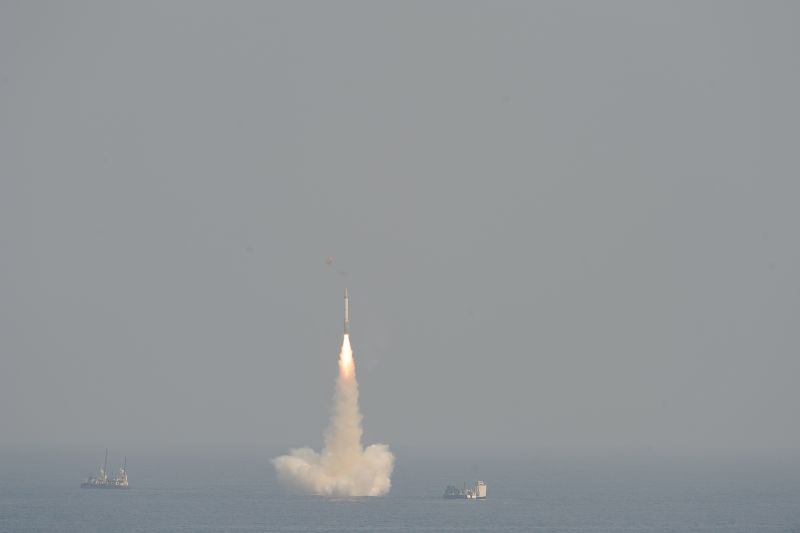
India’s Latest Nuclear Ballistic Submarine: Racing to Match China’s Arsenal
India Has a New Nuclear-Capable Ballistic Missile Submarine, but Can It Catch Up with China?
In the realm of naval warfare, possessing a credible and robust submarine fleet is essential for modern militaries looking to project power and deter potential adversaries. In recent years, India has been making significant strides in its submarine capabilities, with the commissioning of its indigenous nuclear-capable ballistic missile submarine, the INS Arihant. While this development marks a significant milestone for India’s naval capabilities, questions remain regarding its ability to catch up with its regional rival, China, in terms of submarine technology and operational capacity.
The commissioning of the INS Arihant in 2016 was a momentous occasion for India, as it marked the country’s entry into the elite group of nations capable of fielding nuclear-powered ballistic missile submarines. Equipped with the K-15 and K-4 submarine-launched ballistic missiles (SLBMs), the INS Arihant provides India with a credible second-strike capability, enhancing its nuclear deterrence posture and bolstering its strategic stability in the region.
However, while the INS Arihant represents a significant leap forward for India’s submarine capabilities, it is just one piece of the puzzle in the country’s broader naval modernization efforts. In comparison to its regional rival, China, India lags behind in terms of the size and sophistication of its submarine fleet. China’s rapidly expanding submarine force, which includes nuclear-powered attack submarines, ballistic missile submarines, and advanced conventional submarines, poses a formidable challenge to India’s naval ambitions in the Indo-Pacific region.
Moreover, China’s submarine technology and operational capacity have been advancing at a rapid pace, with the development of cutting-edge platforms such as the Type 094 Jin-class ballistic missile submarine and the Type 093 Shang-class nuclear-powered attack submarine. These submarines are equipped with advanced missile systems and possess a high degree of stealth, making them formidable adversaries in a potential maritime conflict.
In contrast, India’s submarine fleet, while growing in size and capabilities, still faces challenges in terms of operational readiness, maintenance, and technological advancements. The Indian Navy has been hampered by delays in the construction and acquisition of new submarines, as well as issues related to spare parts availability and training of personnel. These factors have limited India’s ability to fully leverage the potential of its submarine force and project power effectively in the region.
To catch up with China in the submarine domain, India will need to prioritize investments in submarine construction, modernization, and training, as well as enhance its technological capabilities to develop advanced platforms that can match the sophistication of China’s submarine fleet. Collaboration with international partners and leveraging indigenous defense capabilities will be crucial for India to bridge the gap with China and establish itself as a credible maritime power in the Indo-Pacific region.
In conclusion, while the commissioning of the INS Arihant represents a significant milestone for India’s naval capabilities, the country still has a long way to go in catching up with China in the submarine domain. Addressing the challenges related to submarine construction, maintenance, and operational capacity will be essential for India to enhance its maritime security and strategic position in the region. By investing in technological advancements and fostering collaboration with international partners, India can strengthen its submarine fleet and establish itself as a formidable naval power in the Indo-Pacific.
